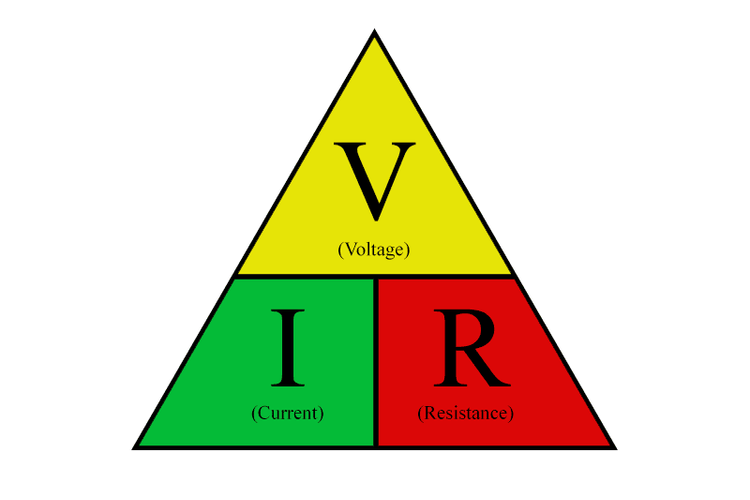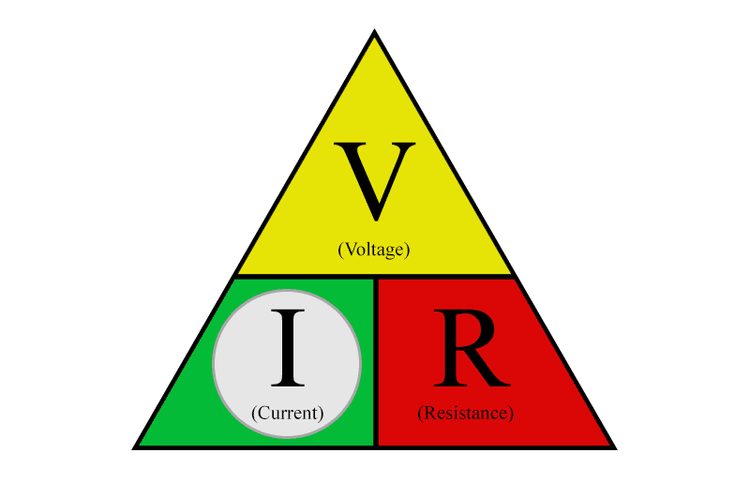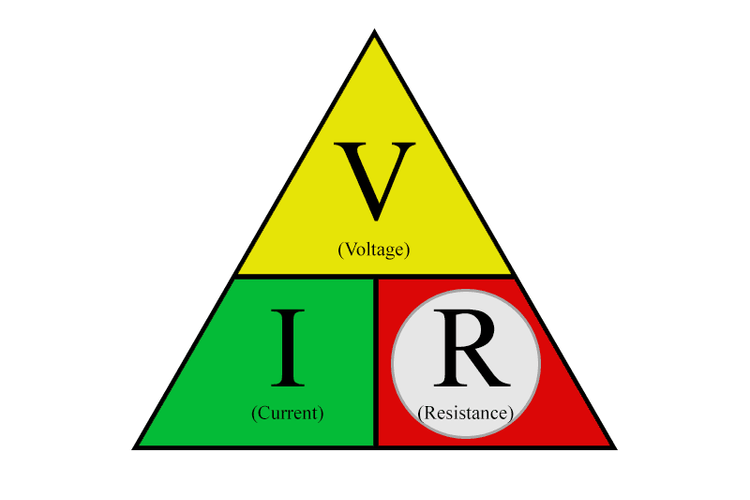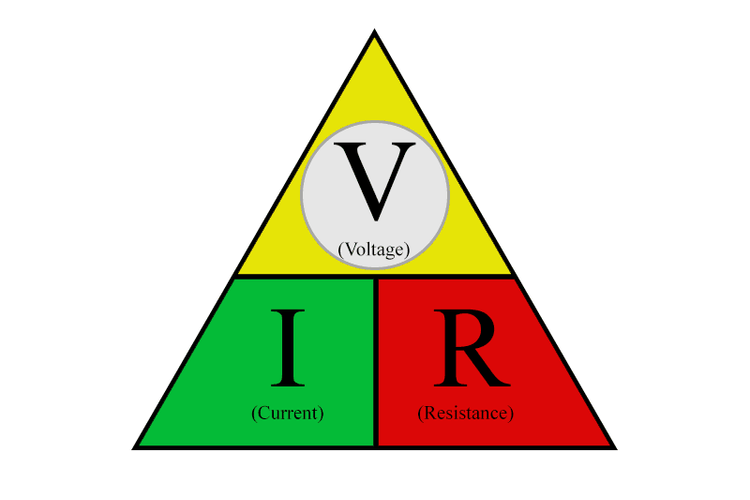How To Calculate Ohm’s Law For Safe Vaping
Safety in vaping starts with having a good understanding of battery limitations. If you haven’t done so already, or need a refresher, I urge you to read our article here:
If you are comfortable with your knowledge of battery safety, the next consideration is using some sort of calculator to make sure your coil builds are within that safe limits of your battery, and further, to allow you to tweak your coils to get the vaping experience you desire. There are tons of Ohm’s Law calculators, and sites like Steam Engine that will do the heavy lifting for you.
If you are happy with those, and wish to remain blissfully ignorant about what is actually behind the calculations, good for you. As long as you know how to apply the results and use an ohm meter, you will live a long, happy, and safe vaping life. But…
…if you want to pull back the curtain and see the inner workings of those calculators, read on.
There’s nothing mystical or magical about Ohm’s Law. It’s a few formulas, usually depicted inside of a triangle, and anyone can easily learn and use the formulas with any regular calculator. No special “Ohm’s Law Calculator”, no Steam Engine required.
In fact, I’m pretty sure that I learned Ohm’s Law in the very first electronics class I took after leaving high school – probably in the first day or two. It’s really that simple. The goal here is to show you the formulas behind Ohm’s Law and hopefully give you an understanding of the relationships between the different elements in a basic electronic circuit as related to vaping.
The Triangle

Inside the triangle you can see the three main elements in any electrical circuit, represented by the letters V, I, and R. I would vocalize the triangle as “V over I times R” with “times” being multiplication. The hardest part of this will be remembering what the letters represent, and that’s easy:
- V = Voltage (your battery voltage)
- I = Current (the amperage drawn by your coil)
- R = Resistance (the resistance, in ohms, of your coil)
So, how do we use the Ohm’s Law triangle? Again, simple – the triangle visually depicts the relationship between voltage, current, and resistance. In the following examples we’ll explore how to use the triangle and formulas to help you build coils targeting the current and wattage you desire.
Calculating current

If you want to determine the current draw through a resistance (your coil) the formula is:
I = V ÷ R (or I = V/R)
How did we arrive at that? Look at the triangle and you will see that to solve for current (I) you must divide voltage (V) by resistance (R).
Let’s put the formula to work in a real life example. If you are using a mechanical mod, with a freshly charged battery you theoretically have 4.2 V available to power your coil. If your coil is 0.5Ω, you now have everything you need to determine current, in amps:
I = 4.2 V ÷ 0.5Ω (or 4.2/0.5)
I = 8.4 A
As you can see, with your 0.5Ω coil and a freshly charged battery at 4.2 V, the resulting current draw will be 8.4 amps. If your battery has a 10 A limit, you are well below the cap. Also note that as the battery depletes, the current will also tail off. For example when the battery reaches 3.7 V with the same load, current will drop to 7.4 A.
Go ahead, do the math – I’ll wait. (Hint: replace the 4.2 V in the above example with 3.7 V).
Calculating power (wattage)
The next thing you will probably want to know is the power generated at the coil, or wattage. It’s not shown in the triangle, but the formula is simple. Just multiply the current in your circuit by the voltage applied:
P = V x I
In our original example, the formula would look like this:
P = 4.2 V x 8.4 A
P = 35.3 W
So that 0.5Ω coil with a fully charged battery at 4.2 V will pull 8.4 A and deliver 35.3 watts. You can see that as the resistance of your coil increases, current will drop and wattage will drop.
Calculating resistance

The second Ohm’s Law formula that can be of use to us is calculating resistance. Let’s say that you have a battery with a 10 A current limit and you want to determine the lowest coil resistance that you can safely run without exceeding the CDR of the battery.
To calculate, you would use the following formula:
R = V ÷ I
Since you know that the battery CDR is 10 A, you might want to target 9 A in your calculation, to give yourself 1 A of headroom. You also know that your max voltage will be 4.2 V on a single battery mod. So the calculation goes like this:
R = 4.2 V ÷ 9 A
R = 0.47Ω
The result tells you that your safe lower limit with the 10 A battery is 0.47Ω – anything lower and you risk exceeding the current limit of the battery, and a ka-boom. Of course if you have a 25 A battery, your low resistance drops to 0.17Ω (substitute 25 A for 9 A in the equation above).
R = 4.2 V ÷ 25 A
R = 0.17Ω
Calculating voltage

Finally, and probably not as useful to us, using the triangle you can solve for voltage in a circuit, as long as you know the values of the other two variables.
To solve for voltage when current and resistance is known, the formula looks like this:
V = I x R
What does it all mean?
Really, the most useful formulas to me as a vaper, are the three that calculate current (I = V ÷ R) and power (P = V x I) and resistance (R = V ÷ I). These will allow you to figure out the current your coil will draw and the wattage that will result. As you increase resistance, current and power will drop off. If you decrease resistance, current and power will increase. The resistance formula allows you to calculate a safe low resistance based on the CDR of your battery.
It’s all good information to help you stay within the safe limits of your batteries, and to tweak the amount of power at your coil to help you achieve your own vaping nirvana. There are other considerations like coil ramp time and the heat of your coil that are determined by wire gauge and mass. Ohm’s Law won’t figure any of that, and a site like Steam Engine can be helpful.
One final, and critical piece of advice I will impart: ALWAYS assume that your battery voltage is the equivalent of a fully charged battery: 4.2 V for a single battery mod or parallel battery mod, or 8.4 V for a dual series mod. People will argue that the coil will never see that actual battery voltage due to voltage drop within the mod, but to be safe ALWAYS use the full theoretical battery voltage (at full charge) in your calculations.
Comments
Post a Comment